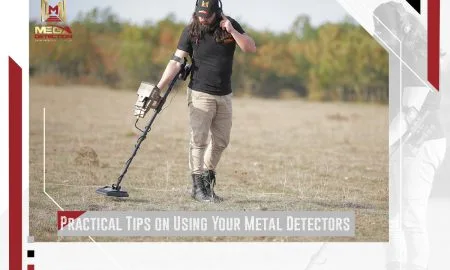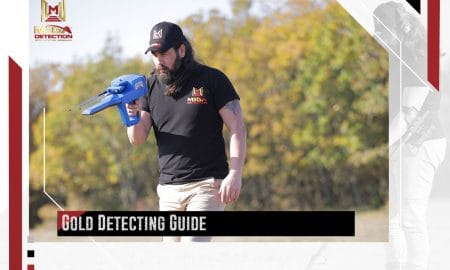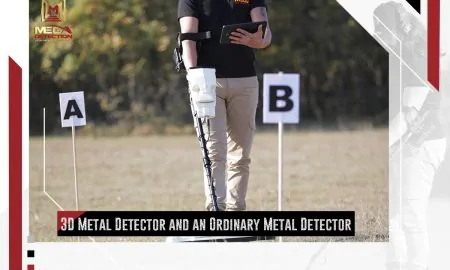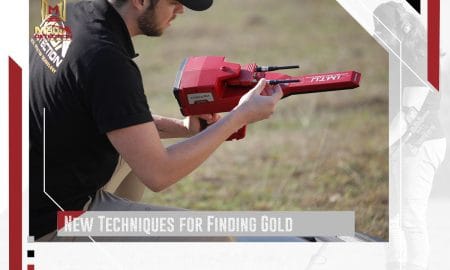Soils Where Gold Exist
Soils Where Gold Exist
Gold was and still is one of the most sought after metals in the world, as people raced to find it for thousands of years until our time, and they invented various devices and methods for prospecting for gold and followed many signs to show them its location. Therefore, we will dedicate this article to talk about the places where gold is found in nature.
Where is the gold in the earth?
Gold spreads in all parts of the earth and exists in many forms. Gold can be detected in the soil, within rocks and metals, and in the depths of seas, oceans and rivers. And its forms vary according to where it is located. Of course, each form has its own extraction methods and specific tools.
The veins of gold in the mountains:
The veins of gold in the mountains are distinguished by their irregular shapes, due to the geographical factors and changes that contributed to their formation. These veins appear either in the form of plates or in the form of pens, and they extend in different lengths that may reach tens of meters. Some people may find it difficult to differentiate between gold veins and quartz veins, but below we will mention the most important differences:
– Quartz veins usually form in places where hot water is found inside cracks.
– In the event that gold is present in hot water, we may produce veins of quartz that contain gold inside, knowing that there is no relationship between the locations of quartz and gold.
– Quartz is found in many colors and has different names, unlike gold, which is not characterized by this diversity.
Signs of buried gold:
There are many indications that indicate the presence of gold in the ground, some of which are engraved in the rock and are called drilling marks, and some of them are prominent on the surface of the rock and are called relief marks. The drilling marks usually indicate that this gold was buried since the era of the ancient Greek and Roman civilizations, and this means that the gold is present in depths of not less than 8 meters underground.
As for the signs of relief, it means that the gold has been buried since the era of the Ottoman Turkish state, and this means that the gold is present in depths that do not exist 2 meters.
The most prominent signs are:
– -Relief eye-shape: It indicates the presence of a valuable type of gem within the rock.
-Snakes: If the snake is more than 41 cm in length, it indicates a water well and therefore it cannot be used.
-The key: indicates the presence of a nearby cave.
-Horse shoe: indicates the presence of a knight’s tomb, and of course, such tombs contain treasures and gold.
-Fingerprint: indicates the presence of treasure, and each fingerprint indicates a chest.
-Dove: indicates the presence of buried gemstones.
Evidence for the presence of gold in the ground:
Many users of metal detectors rely on these guides to help them prospect for gold, the most important of which are:
1- Overlapping rocks: which are formed as a result of the eruption of magma and volcanic lava between the rocks, which helps in their formation. These rocks are characterized by extreme hardness, which stands in the face of corrosion and erosion processes. Gold may accumulate on these types of rocks.
2- Silt: This type of sediment is expected at the bottom of rivers and oceans, and it may contain gold, which is characterized by its heavy weight, which makes it lie at the bottom of these sediments.
How to search for gold without a device:
Despite the great development that hit metal detectors, many people prefer the old and traditional methods such as detecting gold by sieve, which prevailed for hundreds of years. Some people have also traced some geological evidence, such as:
- Change in the color of the rocks: Some acidic solutions may cause a change in the color of the rocks and make them lighter, and this may indicate the presence of gold.
- Quartz vein accumulations: The accumulated accumulations of quartz vein may indicate the presence of gold in the rocks.
And in the end, it is undoubtedly true that there are many other clues and signs that help in detecting gold that humans have not yet detected, but thanks to modern and advanced metal detectors, achieving this is a matter of time only.
Geological Contact Zones
Being able to identify geological contact points is very important (and often completely overlooked) by prospectors for finding areas that gold will occur. Simply put, this is an area where two different rock types come together.
Your research will often indicate with rock types are going to be the most productive from a gold prospecting perspective, but the most important thing is that there is a contact. Often the rock types are irrelevant, as gold seems to occur in all different types. What is most important is that some type of contact occurred, which created pressure and often extremely high temperatures which caused fissures to form and gold to be pushed up to the surface.
An entire book could be written on the subject of contact points and gold formations. To keep it simple, I will just say that identifying these areas were different rock types came together are often extremely important.
The general trend of the geology within your district is very important. Look for contact points where different rock types come together at a 90 degree angle. These contacts resulted in high pressure and high temperature conditions that would commonly produce gold. You will find that many of these areas will have some historic workings, there are still areas out there that are “textbook” contact zones that are very rich with gold that have never been mined.
Gold Geology and Ground Color Changes
Color changes in the soil are another indicator of a contact point. Depending on how much bedrock is exposed in an area, you may or may not be able to easily identify contact points where different rock types come together, but you will be able to see where soil color changes. Since soil is composed of the host rock, even a small change in soil color can be an excellent indicator of a contact zone.
Some color changes can be very readily apparent, while others can be quite subtle. You aren’t looking for small areas with minor change here, you want to try and identify distinct lines of different soil types.
These contact zones may be generally short, but sometimes they will run in a generally straight line for many miles. You may also have success finding new gold bearing areas by locating productive mines and then noting a color change that extends off from the mine. There may be valuable gold deposits in a nearby drainage that are an extension of the same contact zone that occurs at a well-known mine just over the hill.
Remember to always study the different types of gold geology and you will soon learn that there are plenty of areas that have not yet been found.












Leave a Reply